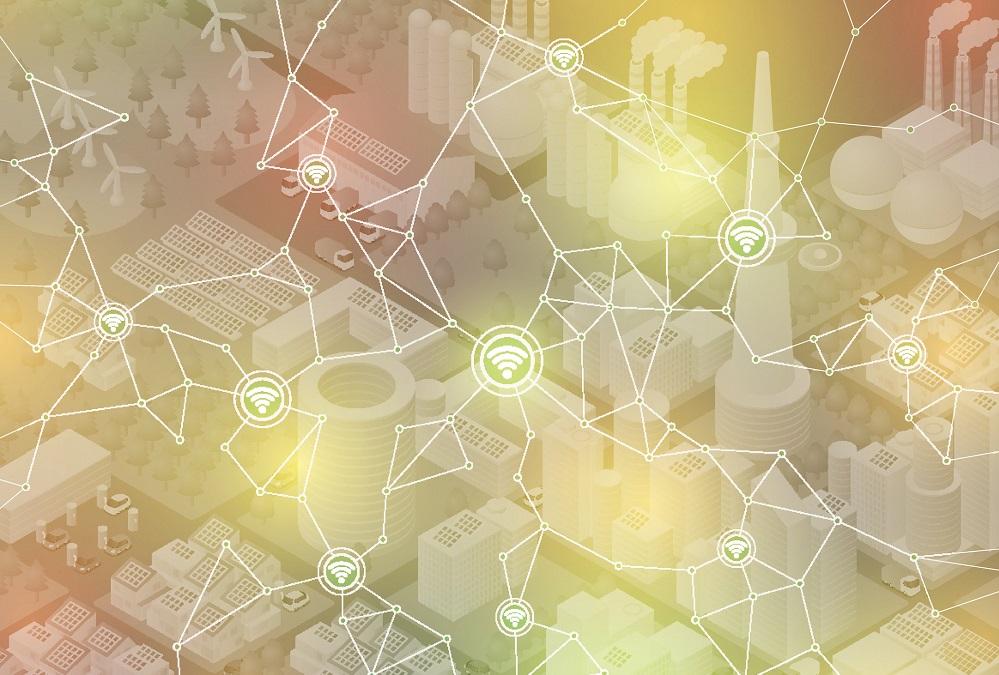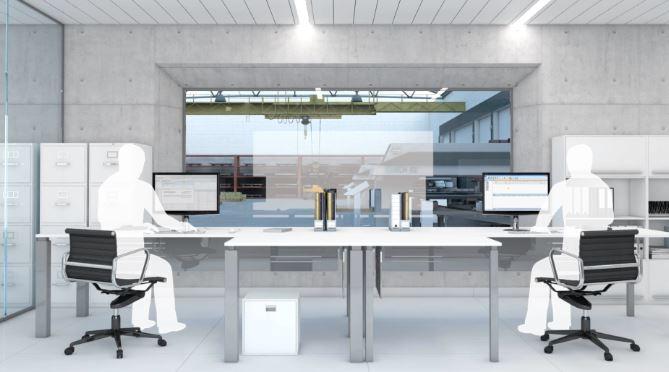R&D Director
- FMA
- The Fabricator
- FABTECH
- Canadian Metalworking
Categories
- Additive Manufacturing
- Aluminum Welding
- Arc Welding
- Assembly and Joining
- Automation and Robotics
- Bending and Forming
- Consumables
- Cutting and Weld Prep
- Electric Vehicles
- En Español
- Finishing
- Hydroforming
- Laser Cutting
- Laser Welding
- Machining
- Manufacturing Software
- Materials Handling
- Metals/Materials
- Oxyfuel Cutting
- Plasma Cutting
- Power Tools
- Punching and Other Holemaking
- Roll Forming
- Safety
- Sawing
- Shearing
- Shop Management
- Testing and Measuring
- Tube and Pipe Fabrication
- Tube and Pipe Production
- Waterjet Cutting
Industry Directory
Webcasts
Podcasts
FAB 40
Advertise
Subscribe
Account Login
Search
Smart machines in smart factories
The nature of manufacturing software systems and machines could soon change dramatically
- By Carlos García Villate
- Updated May 9, 2023
- July 22, 2019
- Article
- Automation and Robotics

At the speed of Industry 4.0, technological development advances so quickly that it can seem arrogant to confidently describe the machines of the future. Nevertheless, we can guess where the trends are going and which direction we feel we should take. Smart machines will begin to operate within a framework that will change how machine tool manufacturers design, manufacture, and implement their machines in their customers’ production plants. Getty Images
Thinking about the next five years frankly incites vertigo. Fabricators cannot look the other way and wait for the developments and innovations of others. The competition never stops, and anticipating innovations from different players in the industry’s digital transformation (machines, software, platforms, communications protocols) has become essential.
Given this scenario, what will the machines of the future be like? They will be equipped with sensors to compile data on any situation relevant to the machine. They will be connected like any other software system, and the information will flow, be shared, and stored on the cloud so it can be analyzed using artificial intelligence and machine learning. All this will help people and systems make better decisions.
At the speed of Industry 4.0, technological development advances so quickly that it can seem arrogant to confidently describe the machines of the future. Nevertheless, we can guess where the trends are going and which direction we feel we should take. Smart machines will begin to operate within a framework that will change how machine tool manufacturers design, manufacture, and implement their machines in their customers’ production plants.
Defining the Smart Factory
The smart factory concept is still in its early stages, and the industry continues to define its components. These include the machines, the programming software, production planning software, business management software, and the mechanisms for integrating different business systems.
Throughout the past 40 years, the core work process in sheet metal has not evolved. Files are imported from CAD; the programming software generates instructions based on job parameters and the machine’s configuration; it then generates the numerical code for the industrial control. All of this is based on algorithms and functionality supported on software interfaces installed on a personal computer or, in multiuser environments, a server connected to a local network.
That said, the processing power and structure limit software’s current potential scope. Although further analysis is needed, environments other than a local computer could provide more processing power that could execute new, much more powerful algorithms.
CAM and Machines as Smart Machines
Since its creation, CAM has generated the program that runs the machine, and the machine and CAM have been separate. But integration is coming. In one sense, a machine will become a “software system” within a network of other interconnected, interoperable systems.
For this to occur, it is very likely that a significant part of what we now understand as an element belonging to the CAM software will be transferred to the “machine system.” In short, the programming software must focus on understanding the result required by the customer (quality, cost, time) as well as components that could affect the manufacturing process.
Consider the conventional process for a laser-cut part. It begins with receiving work and continues with planning, obtaining raw materials, and reserving capacity. A machine cuts the part, which is then sent to subsequent operations and is shipped to the customer.
Throughout this process, software will allow the machine to resolve the specific characteristics related to each cutting technology to transform a design into a final part. And as CAM integrates with manufacturing execution systems, machine-specific processes become part of a choreography involving processes across the enterprise.
Determining which part of the current CAM software must be migrated and fused with the machine is the Gordian Knot of the smart factory. The decision will affect the way different systems relate to one another and define how the services executed in the smart factory will be orchestrated.
After checking the different sensors and internal alarms, a smart machine will tell us its production status and whether it is able to complete the production assigned to it in time. It will ask for attention to resolve abnormal situations or modify plans. All this will produce data that reveal behavior patterns that could help improve overall performance and foresee future problems.
The machine of the future will work autonomously in a smart factory. It will avoid undesired idle time, have all the data and applications that give it the intelligence to make decisions in real time, request functions or services located on the cloud to clarify decisions or obtain supplementary data, and report on the results, detailing the data it used to make the decision. Analytical systems will process the data that help improve planning systems, CAM, and the machine itself.
Smart Machines Run Locally or in the Cloud?
To make this a reality, the industry first must clearly determine which processes and data will be run on the cloud and which will be hosted locally. The resulting distributed architecture should ensure high productivity for both the machine and the entire factory.
Until now, the entire machine system had to be hosted and computed with the resources of the machine itself. In the future, more electronics and computing power won’t be at the machine. That’s the old approach. Technology like 5G will provide the high-speed connectivity the industry needs to start hosting the computing resources outside the machine.
This opens the door for software to continue to be an intrinsic part of the machinery system, even while it is hosted on the cloud. This will bring the industry to a new level of computing that offers a world of options. Today, the cloud offers an interface to run a CNC; tomorrow it could offer a seemingly infinite number of services.
About the Author
Carlos García Villate
5412 Courseview Drive, Suite 205
Mason, OH 45040
Related Companies
subscribe now

The Fabricator is North America's leading magazine for the metal forming and fabricating industry. The magazine delivers the news, technical articles, and case histories that enable fabricators to do their jobs more efficiently. The Fabricator has served the industry since 1970.
start your free subscription- Stay connected from anywhere

Easily access valuable industry resources now with full access to the digital edition of The Fabricator.

Easily access valuable industry resources now with full access to the digital edition of The Welder.

Easily access valuable industry resources now with full access to the digital edition of The Tube and Pipe Journal.
- Podcasting
- Podcast:
- The Fabricator Podcast
- Published:
- 04/16/2024
- Running Time:
- 63:29
In this episode of The Fabricator Podcast, Caleb Chamberlain, co-founder and CEO of OSH Cut, discusses his company’s...
- Industry Events
16th Annual Safety Conference
- April 30 - May 1, 2024
- Elgin,
Pipe and Tube Conference
- May 21 - 22, 2024
- Omaha, NE
World-Class Roll Forming Workshop
- June 5 - 6, 2024
- Louisville, KY
Advanced Laser Application Workshop
- June 25 - 27, 2024
- Novi, MI
































